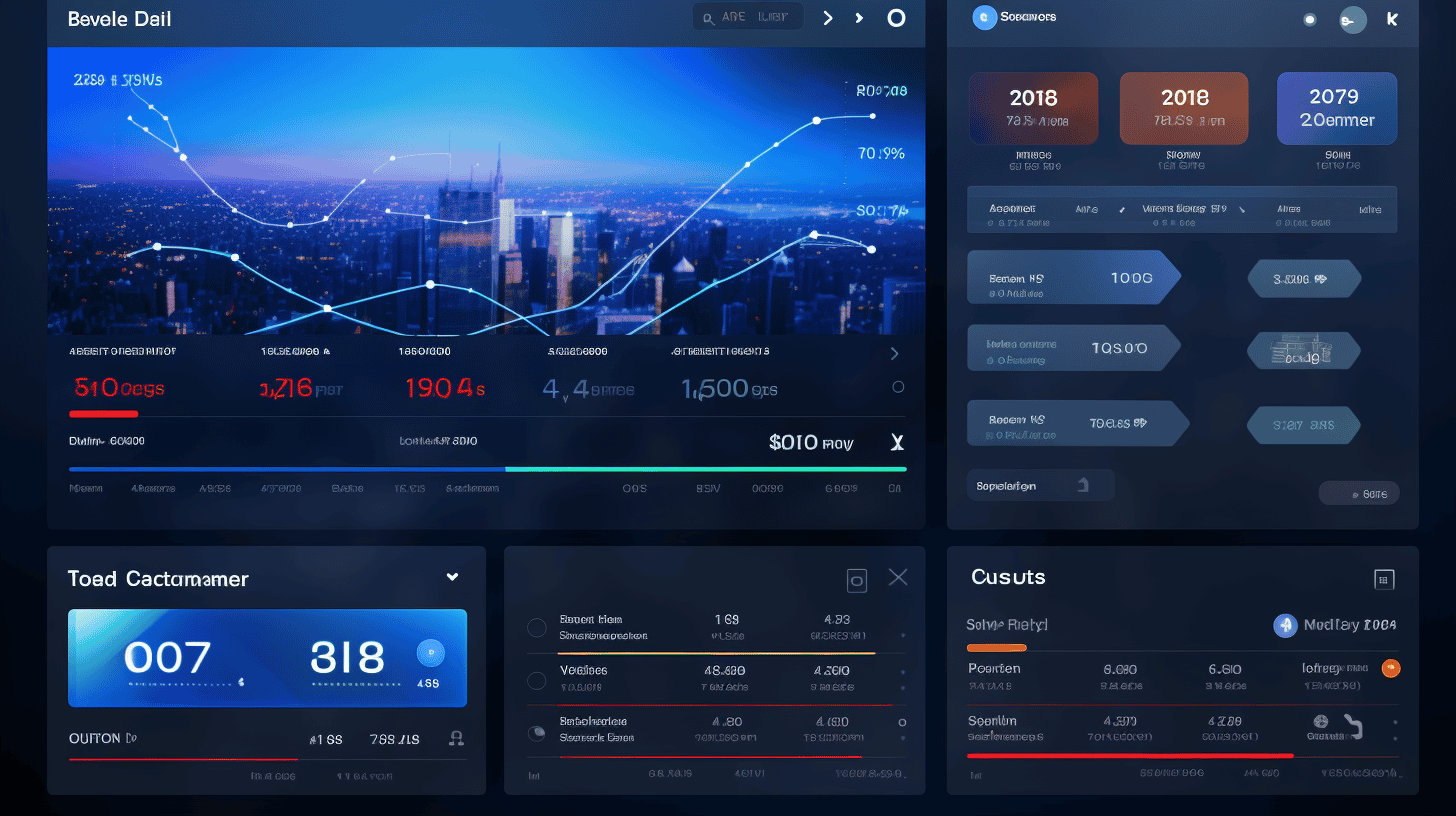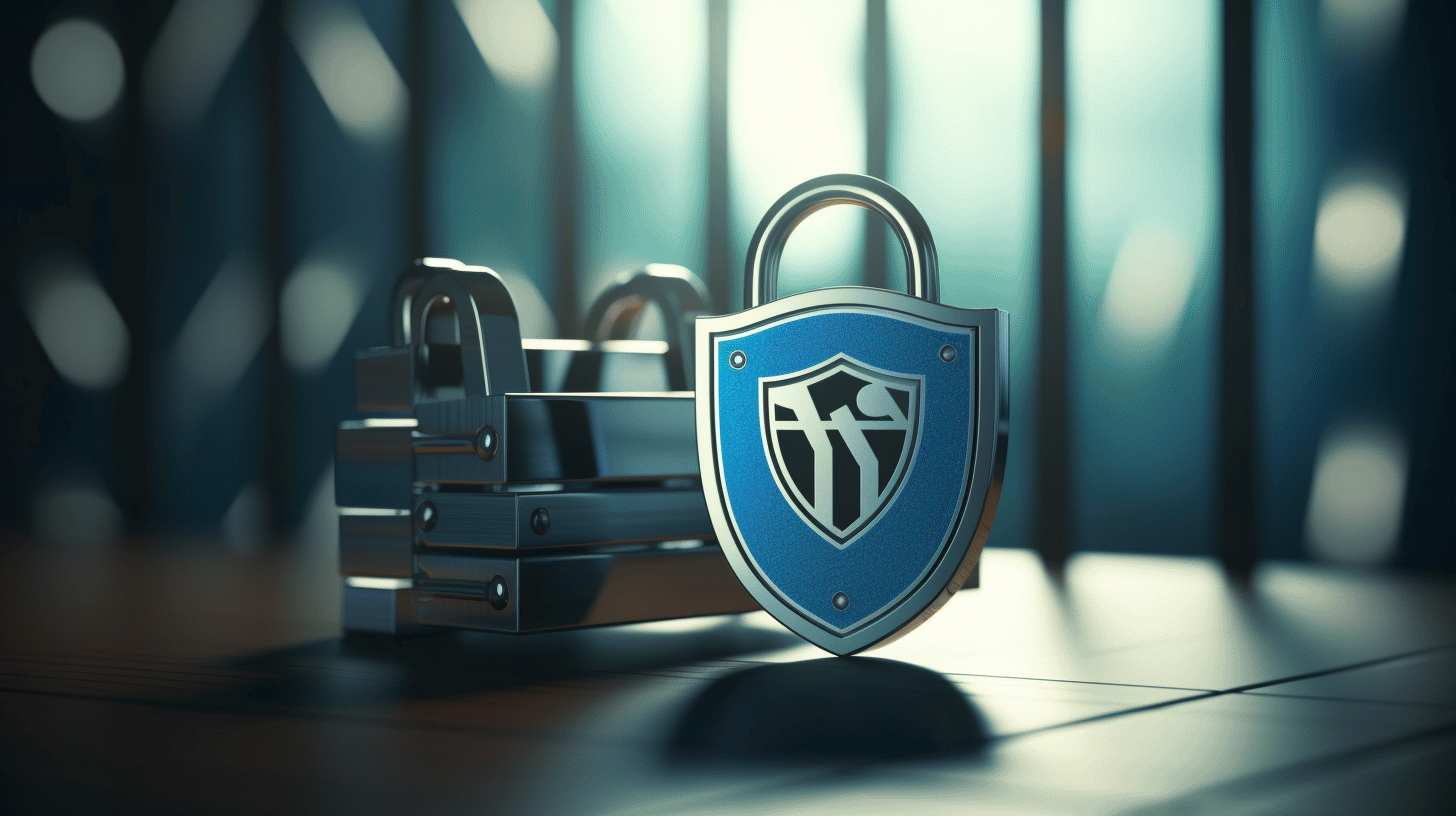歡迎來到行銷人員的網站管理和 WordPress 維護指南!在當今數位時代,擁有一個維護良好且優化的網站對於企業在線上發展至關重要。無論您是經驗豐富的行銷人員還是剛起步,本指南都將為您提供寶貴的見解,幫助您了解網站管理和實施有效的 WordPress 維護實務。
🌟 為什麼網站管理很重要?
有效的網站管理不僅僅意味著擁有一個美觀的網站。它涉及不斷調整和優化您的網站以滿足受眾不斷變化的需求。一個管理良好的網站:
- 增強使用者體驗:透過遵循 ADA 存取指南、確保行動優化和簡化導航,您可以為訪客創造無縫愉快的體驗。
- 提高搜尋引擎可見度:定期更新您的網站內容並實施 SEO 最佳實踐可以提高您的搜尋引擎排名,使潛在客戶更容易找到您。
- 建立信譽和信任:具有統一的配色方案、引人注目的視覺元素和高品質內容的視覺吸引力強的網站可以幫助與受眾建立信任並提高品牌的信譽。
- 推動參與度和轉換率:透過創建有價值、相關且可分享的內容,您可以吸引受眾、建立品牌忠誠度並最終推動轉換。
💡 為什麼您應該關心 WordPress 維護?
WordPress 是一種流行的內容管理系統 (CMS),為網路的很大一部分提供支援。它提供靈活性、易用性以及大量外掛程式和主題來客製化您的網站。但是,與其他軟體一樣,WordPress 需要定期維護以確保最佳效能和安全性。 WordPress 維護至關重要的一些主要原因包括:
- 安全性:定期更新 WordPress 核心、主題和外掛程式對於保護您的網站免受漏洞和安全漏洞的侵害至關重要。
- 穩定性:更新還解決錯誤、改善功能並優化效能,從而帶來穩定可靠的網站。
- 備份:定期備份您的 WordPress 網站,確保在出現資料遺失或網站問題時有一個還原點。
- 相容性:保持外掛程式和主題更新可確保與最新版本的 WordPress 相容,從而防止衝突和潛在故障。
現在我們已經確定了網站管理和 WordPress 維護的重要性,讓我們深入研究每個主題,以幫助您優化網站以獲得成功! 🚀
了解網站管理
在當今的數位時代,擁有線上業務對於各種規模的企業來說都至關重要。一個管理良好的網站不僅可以作為虛擬店面,而且在吸引和吸引潛在客戶方面也發揮著重要作用。從確保遵守 ADA 到定期維護網站的效能,各個方面都有助於有效的網站管理。在本文中,我們將探討有助於成功管理網站的一些關鍵因素以及如何實施這些因素以增強整體使用者體驗。
讓您的網站符合 ADA 訪問指南
《美國殘疾人法案》(ADA)的製定是為了確保殘疾人平等獲得商品和服務。這包括網站和行動應用程式等線上平台。遵守 ADA 存取指南不僅可以為所有使用者提供包容性的體驗,而且還有助於避免法律後果。在使您的網站適應 ADA 指南時需要牢記的一些關鍵注意事項包括:
- 為圖像提供替代文字:這可確保視障用戶可以透過螢幕閱讀器技術了解圖像的內容。
- 為影片添加隱藏式字幕:透過添加隱藏式字幕,有聽力障礙的使用者可以理解音訊內容。
- 結合鍵盤導航:提供鍵盤友善的導航,讓依賴鍵盤輸入的使用者輕鬆瀏覽網站。
確保您的網站符合 ADA 標準,表明您致力於包容性和可訪問性,讓所有使用者都能無縫存取您的內容。
定期網站維護的重要性
與其他資產一樣,網站需要定期維護以確保其最佳功能。忽視網站維護可能會導致各種問題,例如安全漏洞、外掛程式過時和連結中斷。定期的網站維護可以幫助解決這些問題並確保您的網站順利運作。以下是定期網站維護至關重要的一些原因:
- 安全性:定期更新和修補有助於保護您的網站免受潛在的安全威脅和漏洞。
- 效能優化:優化網站速度和效能可改善使用者體驗並提高搜尋引擎排名。
- 內容管理:定期更新和刷新您的網站內容,以保持其與訪客的相關性和吸引力。
透過投入時間和精力進行定期網站維護,您可以確保您的網站保持安全、運作良好並持續有效地吸引使用者。
視覺元素和配色方案在使用者體驗中的作用
對於網站來說,視覺效果在吸引用戶注意力和傳達品牌形象方面發揮著至關重要的作用。所使用的配色方案和整體視覺元素會大大影響使用者體驗。以下是需要考慮的一些關鍵點:
- 色彩心理學:不同的顏色會喚起不同的情緒並且有不同的文化聯想。選擇與您的品牌價值相符且能引起目標受眾共鳴的配色。
- 一致的品牌:確保您的網站的視覺元素(例如標誌、字體和圖像)與您的整體品牌識別一致。這有助於在使用者之間建立信任和認可。
- 使用者友善設計:具有清晰直覺設計的視覺吸引力的網站可增強整體使用者體驗。考慮一些因素,例如易於閱讀的字體、組織良好的佈局以及視覺上吸引人的圖像。
透過將視覺上令人愉悅的元素和配色方案融入您的網站設計,您可以創建與您的品牌訊息相符的令人難忘且引人入勝的用戶體驗。
移動優化和簡化導航的重要性
在大多數網路使用者透過行動裝置瀏覽的時代,優化您的網站以適應行動裝置至關重要。行動友善網站不僅可以確保無縫的用戶體驗,而且還有助於提高搜尋引擎排名。以下是行動優化的一些關鍵考慮因素:
- 響應式設計:實施響應式設計,自動適應各種螢幕尺寸,確保您的網站在各個裝置上都能正常顯示和運作。
- 清晰的導航:為行動用戶簡化網站的導航選單,使他們能夠輕鬆快速地找到所需的資訊。
- 快速載入頁面:優化您的網站效能,以確保在行動裝置上快速載入。頁面載入緩慢會導致使用者沮喪並增加跳出率。
透過優先考慮行動優化和簡化導航,您可以為透過智慧型手機或平板電腦造訪您網站的訪客提供卓越的使用者體驗。
總之,有效的網站管理涉及各個方面,包括 ADA 合規性、定期維護、視覺元素和行動優化。實施這些策略不僅可以增強用戶體驗,而且還有助於提高搜尋引擎排名和整體業務成功。透過專注於用戶需求並隨時了解最佳實踐,您可以確保您的網站仍然是您企業的寶貴資產。有關有效 WordPress 網站管理的更多提示,請查看 有效的 WordPress 網站管理.
建立和更新網站內容
在我們生活的快節奏的數位世界中,創建和更新網站內容對於保持相關性和吸引受眾至關重要。您的網站通常是用戶對您企業的第一印象,因此讓它發揮作用至關重要。但是,創建有價值、相關且可分享的內容需要什麼?為什麼定期更新內容如此重要?讓我們深入研究並找出答案!
建構有價值、相關且可分享的內容
在創建網站內容時,品質是關鍵。您希望您的內容能為讀者提供價值並滿足他們的需求和興趣。以下提示可協助您建立有價值、相關且可分享的內容:
- 了解你的目標受眾: 了解您的目標受眾是誰以及他們正在尋找什麼。進行市場調查,分析您的網站分析,並透過調查或社交媒體與您的受眾互動以收集有價值的見解。
- 確定相關主題: 隨時了解與您的領域相關的行業趨勢和熱門話題。使用 Google Trends、Buzzsumo 或社交媒體平台等工具來確定與您的受眾產生共鳴的熱門和相關主題。
- 製作引人注目的標題: 標題是用戶首先看到的內容,因此請讓它發揮作用!創建引人注目且引人入勝的標題,吸引讀者的注意力並吸引讀者點擊閱讀您的內容。
- 創造有價值的內容: 一旦你選擇了相關主題,提供有價值的資訊就很重要。為受眾的問題提供見解、技巧、教學或解決方案。力求使您的內容具有資訊性、教育性並具有可操作性。
- 使其具有視覺吸引力: 使用圖像、影片或資訊圖表等視覺效果來增強您的內容並使其更具吸引力。視覺效果不僅能吸引註意力,還可以幫助以更易於理解的方式解釋複雜的想法或數據。
- 針對搜尋引擎進行優化: 在您的內容中自然地加入相關的關鍵字,以提高您的搜尋引擎可見度。重點在於競爭較低但用戶意圖較高的長尾關鍵字。
- 鼓勵社交分享: 透過新增社群分享按鈕或提示,讓讀者可以輕鬆地在社群媒體平台上分享您的內容。透過邀請觀眾分享與內容相關的想法或經驗來與他們互動。
請記住,目標是創建引起受眾共鳴的內容,鼓勵參與和分享,並最終為您的網站帶來流量。
定期更新內容
雖然創建有價值的內容很重要,但定期更新和刷新現有內容也同樣重要。原因如下:
- 提高搜尋引擎排名: 像谷歌這樣的搜尋引擎優先考慮新鮮和最新的內容。透過定期更新您的網站內容,您可以向搜尋引擎表明您的網站活躍且相關,這可以對您的搜尋引擎排名產生積極影響。
- 提供準確資訊: 產業不斷發展,資訊很快就會過時。透過更新您的內容,您可以確保您的受眾獲得最準確、最相關、最可靠的資訊。
- 提高用戶參與度: 再次造訪您網站的訪客很高興看到新的和更新的內容。這表明您的企業積極主動並致力於提供新的見解和解決方案,這可以鼓勵他們在您的網站上花費更多時間並與您的品牌互動。
- 保持領先於競爭對手: 定期更新您的內容可以為您帶來競爭優勢。透過提供最新的資訊和見解,您可以將自己定位為行業內值得信賴的權威來源。
請記住,網站內容不是靜態的。它應該隨著您的業務和行業一起發展。保持積極主動,專注於趨勢和更新,並投入時間和精力來創建和更新能引起觀眾共鳴的內容。
為您的網站選擇合適的 CMS
在建立網站時,選擇正確的內容管理系統 (CMS) 至關重要。由於可供選擇的選項眾多,因此要決定哪一個最適合您的需求可能會很困難。雖然有幾個因素需要考慮,但有一個面向不容忽視,那就是 CMS 的安全功能。
CMS 的安全功能
在當今的數位環境中,網路安全比以往任何時候都更加重要。選擇優先考慮安全性的 CMS 來保護您的網站免受潛在威脅至關重要。以下是一些需要尋找的關鍵安全功能:
- 安全用戶身份驗證:強大的 CMS 應該提供多種身份驗證選項,例如雙重認證或密碼加密,以確保只有授權使用者才能存取後端。
- 基於角色的存取控制:此功能可讓您為不同的使用者定義特定的角色和權限。例如,您可以授予內容創作者完全的編輯權限,同時限制其他使用者對敏感區域的存取。
- 定期安全性更新:可靠的 CMS 供應商會定期發布安全性更新和修補程式來解決可能出現的任何漏洞。這有助於保護您的網站免受最新威脅。
- 防範惡意軟體:尋找包含內建功能來偵測和防止惡意軟體攻擊的 CMS。即時掃描和自動刪除惡意程式碼等功能可以幫助保護您的網站及其訪客。
- 安全文件上傳:如果您的網站允許檔案上傳,請確保 CMS 已採取措施防止惡意檔案上傳。文件類型限制和病毒掃描等功能可以幫助降低這種風險。
選擇具有強大安全功能的 CMS,您可以放心,您的網站受到良好的保護,不會受到潛在安全漏洞的侵害。
CMS 定期更新
選擇 CMS 時要考慮的另一個關鍵因素是其接收更新的頻率。定期更新至關重要,原因如下:
- 安全:如前所述,定期更新可以修復 CMS 中可能存在的任何漏洞或錯誤,從而幫助確保您的網站安全。駭客不斷發展其攻擊策略,CMS 提供者必須保持警惕,發布更新以應對新出現的威脅。
- 表現:更新通常包括可以提高網站速度和效率的效能增強。這反過來會帶來更好的用戶體驗,並對您的搜尋引擎排名產生積極影響。
- 相容性:CMS 更新可確保您的網站與最新版本的網頁瀏覽器和其他軟體保持相容。透過保持最新狀態,您可以為使用不同裝置或瀏覽器版本的訪客提供無縫體驗。
選擇具有定期更新記錄和積極支援和維護平台的專門開發團隊的 CMS 至關重要。
CMS 與最新版本的兼容性
最後,在選擇 CMS 時,必須考慮其與不同技術的最新版本的兼容性。這包括與以下設備的兼容性:
- Web 瀏覽器:您的 CMS 應該與流行的網頁瀏覽器(如 Google Chrome、Mozilla Firefox、Safari 和 Microsoft Edge)相容,以確保您的網站能夠正常為所有用戶提供服務。
- 程式設計語言:檢查 CMS 是否支援最新版本的程式語言,例如 PHP 或 Python。這可確保您的網站可以利用最新的功能和效能改進。
- 資料庫管理系統:如果您的網站需要資料庫,請確保 CMS 與最新版本的資料庫管理系統(如 MySQL、PostgreSQL 或 MongoDB)相容。
透過選擇與最新技術相容的 CMS,您可以為您的網站提供面向未來性,並確保其在不斷變化的數位環境中長久耐用。
總之,在為您的網站選擇 CMS 時,不要忽略安全功能、定期更新以及與最新版本技術的兼容性的重要性。透過考慮這些因素,您可以做出明智的決定並選擇能夠支援您網站發展和安全需求的 CMS。
關鍵網站設計原則
在設計網站時,需要牢記幾個關鍵原則。這些原則確保您的網站不僅具有視覺吸引力,而且用戶友好且易於訪問。在本節中,我們將探討一些最重要的設計原則,這些原則可以幫助提升您網站的整體使用者體驗。
以使用者為中心的設計原則
網頁設計的基本原則之一是將使用者置於設計過程的中心。這意味著了解您的目標受眾並創建一個滿足他們的需求和偏好的網站。以下是一些需要考慮的以使用者為中心的設計原則:
- 直覺的導航:確保您的網站導航直觀且易於使用。使用者應該能夠快速、輕鬆地找到他們需要的資訊。
- 層次清晰:使用視覺提示(例如標題、副標題和項目符號)來引導使用者瀏覽內容。這有助於他們了解資訊的組織並找到他們正在尋找的內容。
- 一致性:在整個網站中保持一致的設計。這包括在不同的頁面上使用一致的字體、顏色和佈局。一致性有助於打造一個具有凝聚力和專業外觀的網站。
針對行動裝置和可訪問性進行設計
隨著智慧型手機和平板電腦的日益普及,設計網站時必須考慮到行動裝置。行動響應式設計可確保您的網站在較小的螢幕上也能正常顯示和運作。此外,可訪問性對於確保殘疾人能夠有效地訪問和瀏覽您的網站至關重要。以下是設計適合行動裝置且可存取的網站的一些技巧:
- 響應式設計:使用響應式設計技術確保您的網站適應不同的螢幕尺寸和解析度。這有助於為所有裝置上的用戶提供無縫的瀏覽體驗。
- 圖像的替代文本:為圖像添加描述性替代文本,以幫助依賴螢幕閱讀器理解內容的視障用戶。
- 鍵盤導航:確保您的網站可以使用鍵盤輕鬆導航,因為某些使用者可能行動不便,需要依賴鍵盤導航。
有效利用視覺層次
視覺層次是指網頁上元素的排列和優先順序。透過有效利用視覺層次,您可以引導使用者的注意力並強調重要內容。以下是實現有效視覺層次的一些技巧:
- 尺寸和位置:使用更大、更粗的元素來吸引對重要訊息的注意。將關鍵元素(例如號召性用語按鈕)放置在首屏上方,以提高可見度。
- 對比:使用對比色和字體大小在不同元素之間創造視覺對比。這有助於突出重要內容。
- 空格:策略性地結合空白來創造視覺呼吸空間並分隔不同的部分。空白可以幫助提高可讀性並使內容看起來不那麼混亂。
字體和顏色對比
選擇正確的字體和顏色對於創建具有視覺吸引力的網站至關重要。字體會影響內容的整體基調和可讀性,而顏色對比則確保文字易於辨認。以下是使用字體和顏色對比的一些技巧:
- 字體選擇:選擇在螢幕上易於閱讀的字體,例如 Arial 或 Helvetica 等無襯線字體。避免使用太多不同的字體,因為這會使網站顯得混亂。
- 顏色對比:確保文字和背景顏色之間有足夠的對比。低色彩對比度會使有視覺障礙的使用者難以閱讀內容。使用線上工具檢查顏色組合的對比。
請記住,應用這些關鍵的網站設計原則可以顯著增強您網站的使用者體驗。透過優先考慮使用者需求、針對行動裝置和可訪問性進行設計、有效利用視覺層次以及使用字體和顏色對比,您可以創建一個不僅外觀精美而且還能為用戶提供無縫且引人入勝的體驗的網站。
WordPress 維護以優化效能
在當今的數位時代,擁有一個維護良好、性能卓越的網站對於企業和個人來說都至關重要。而當談到網站管理時,WordPress 無疑是最受歡迎的選擇之一。但僅僅建立一個 WordPress 網站是不夠的;定期維護對於確保最佳效能和安全性至關重要。在本文中,我們將探討一些基本的 WordPress 維護實踐,這些實踐可以幫助您保持網站順利、有效率地運作。
WordPress 核心、主題和外掛的定期更新
WordPress 是一個開源平台,這意味著它不斷發展和改進。核心軟體、主題和外掛程式都會定期更新,以修復錯誤、增強安全性並引入新功能。必須密切注意這些更新以確保您的網站保持安全並符合最新標準。
以下是有關更新需要記住的一些要點:
- 保持你的 WordPress 核心更新至最新版本。這將為您提供最新的安全補丁和改進。
- 定期更新您的 WordPress 主題和外掛。開發人員經常發布更新來修復錯誤並保持與最新版本的 WordPress 的兼容性。
- 在更新之前,請務必備份您的網站以避免任何潛在問題。
- 使用可靠的更新管理工具來簡化流程並保持井然有序。
輕鬆的 WordPress 備份
備份您的 WordPress 網站就像擁有保單一樣。它可以保護您的網站及其內容免受伺服器崩潰、駭客攻擊或意外資料遺失等不可預見的情況的影響。定期備份可確保您在發生任何意外時將網站恢復到以前的工作狀態,最終節省您的時間、金錢和精力。
以下是一些輕鬆進行 WordPress 備份的技巧:
- 定期設定自動備份。這將確保您的數據始終是最新的並且在您需要時可以隨時獲取。
- 使用提供增量備份、輕鬆還原和遠端儲存選項等功能的可信任備份插件。
- 將備份儲存在安全的位置(最好是異地),以確保冗餘並防止資料遺失。
維護模式的有效使用
有時,您可能需要在您的網站上執行某些維護任務而不影響使用者體驗。這就是維護模式發揮作用的地方。它允許您將您的網站處於臨時離線狀態,顯示自訂訊息或登入頁面以通知訪客有關維護工作。
以下是有效使用維護模式的一些要點:
- 執行更新、進行重大設計變更或執行任何其他後端操作時啟用維護模式。
- 客製化您的維護頁面以反映您的品牌並向您的訪客提供相關資訊。
- 利用提供高級功能的插件,如倒數計時器、電子郵件捕獲表單或社交媒體集成,以便在維護期間保持觀眾的參與度。
更新自動化工具
手動跟上 WordPress 更新、主題更新和外掛程式更新可能會成為一項耗時的任務,尤其是當您管理多個網站時。自動化工具可以顯著簡化此過程,並確保您的網站始終保持最新狀態,無需任何人工幹預。
以下是一些流行的 WordPress 維護自動化工具:
- ManageWP-一個全面的管理儀表板,可讓您從單一位置更新多個 WordPress 網站。
- InfiniteWP – 與 ManageWP 類似,它允許您輕鬆管理和更新多個網站。
- MainWP-一個功能強大的插件,可以將您的網站變成管理儀表板,提供輕鬆更新等功能。
檢查並確保插件相容性
外掛是 WordPress 生態系統不可或缺的一部分,可以擴展網站的功能並添加新功能。然而,並非所有插件都是平等的,當同時使用多個插件時可能會出現相容性問題。確保您安裝的外掛程式與您的 WordPress 版本以及彼此相容至關重要。
以下是檢查和確保插件相容性的一些提示:
- 定期更新您的插件以獲得最新的兼容性修復和改進。
- 閱讀外掛程式評論並檢查開發人員的更新歷史以評估他們對相容性和持續支援的承諾。
- 在將新外掛程式安裝到您的即時網站之前,請先在暫存環境中進行測試,以盡量減少潛在衝突。
如您所見,WordPress 維護在優化您網站的效能和安全性方面發揮著重要作用。透過遵循這些最佳實踐,您可以確保您的 WordPress 網站保持最新、備份並與最新更新相容。請記住,維護良好的網站是可靠且用戶友好的網站。因此,花一點時間進行定期維護,從長遠來看您將獲得回報。
有關 WordPress 管理和維護的更多信息,請查看 WordPress 管理.
WordPress 維護的最佳實踐
投資 WordPress 維護服務
在管理 WordPress 網站時,投資專業維護服務可以帶來很大的不同。無論您是小型企業主還是經驗豐富的 Web 開發人員,擁有專門的團隊來負責 WordPress 網站的持續維護都可以確保其順利運作和最佳效能。
託管 WordPress 解決方案,例如 託管 WordPress 解決方案,提供涵蓋廣泛基本任務的綜合維護服務。這些服務通常包括定期更新、備份、安全性檢查和錯誤管理。透過將這些任務外包給專家,您可以專注於您的核心業務活動,同時確保您的網站保持安全和最新。
持續更新和備份
定期更新對於保持您的 WordPress 網站順利運行至關重要。更新不僅引入了新功能和改進,而且還解決了安全漏洞和錯誤。密切注意這些更新非常重要,以確保最佳的用戶體驗並保護您的網站免受潛在威脅。
除了更新之外,定期備份也同樣重要。如果您的網站出現問題,它們可以充當安全網。透過最近的備份,您可以在發生資料遺失或出現其他問題時快速將網站還原到先前的狀態。建議定期安排自動備份並將其安全地儲存在異地,以增加安心。
安全檢查和資料庫優化
對於任何 WordPress 網站所有者來說,網站安全都應該是首要任務。定期的安全檢查有助於識別和修復駭客可能利用的漏洞。這些檢查包括掃描惡意軟體、監控登入嘗試以及實施雙重認證等強有力的安全措施。確保您的網站擁有安全的環境,不僅可以保護您的敏感數據,還可以維護您的聲譽和受眾的信任。
除了安全性之外,優化資料庫是 WordPress 維護的另一個重要方面。隨著時間的推移,資料庫可能充斥著不必要的數據,從而降低網站的效能。定期進行資料庫最佳化有助於刪除冗餘資料並簡化資料庫結構,從而加快頁面載入時間並提高網站的整體效能。
錯誤管理和故障排除
沒有任何一個網站能夠避免偶爾出現的錯誤或技術問題。然而,關鍵在於及時有效的錯誤管理和故障排除。專業維護服務提供者擁有專業知識,能夠快速識別和解決可能出現的任何問題,最大限度地減少停機時間並確保無縫的用戶體驗。
有效的錯誤管理包括監控和解決斷開的連結、解決插件衝突以及解決任何相容性問題。透過主動處理這些錯誤,您可以為訪客提供流暢的瀏覽體驗,並避免對您的業務造成潛在的昂貴影響。
定義 WordPress 維護計劃的好處
制定明確的 WordPress 維護計劃可以為網站所有者和開發人員帶來多種好處。一些主要優勢包括:
- 提高網站效能: 更新、備份和優化等定期維護任務有助於網站更快、更有效率。
- 增強安全性: 透過監控和更新安全措施,您可以保護您的網站免受潛在威脅並維護您的線上聲譽。
- 減少停機時間: 及時的錯誤管理和故障排除可最大限度地減少對您網站可用性的干擾,確保無縫的使用者體驗。
- 安心: 有了可靠的維護服務提供者來處理您網站的技術問題,您就可以專注於發展業務和實現目標。
請記住,投資專業的 WordPress 維護服務就是對您網站的長期成功和效能的投資。透過與 Managed WordPress Solutions 等值得信賴的提供者合作,您可以確保您的網站保持安全、最新並以最佳狀態運作。
結論
總之,網站管理和 WordPress 維護的世界是廣闊的並且不斷發展的。從適應 ADA 訪問指南到優先考慮行動優化和簡化導航,有許多因素需要考慮,以確保成功的線上形象。
創建有價值且可共享的內容、定期更新您的網站以及選擇正確的 CMS 是維護專業且用戶友好的網站的關鍵步驟。此外,融入以使用者為中心的設計原則、透過定期更新和備份來優化網站效能、以及投資可靠的維護服務,都是為您的受眾提供無縫數位體驗的關鍵。
雖然網站管理可能很複雜,但有資源和服務可以簡化這個過程。 託管-WP™是一個高階管理 WordPress 雲端託管平台,致力於簡化基礎設施,提供全天候專家支持,並提供主動監控以優化您的 WordPress 網站的效能。
透過利用正確的工具、策略和支持,您可以確保您的網站保持安全、最新且具有視覺吸引力。擁抱網站管理和 WordPress 維護的世界,充分釋放您線上業務的潛力。
託管-WP™ – 使用 Managed-WP™ 簡化您的 WordPress 維護和託管體驗。
常見問題解答
- 為什麼網站管理和 WordPress 維護對行銷人員很重要?
網站管理和 WordPress 維護對於行銷人員來說至關重要,以確保他們的網站順利運作、保持安全並提供積極的使用者體驗。定期更新和維護有助於優化網站效能、提高 SEO 排名並防範安全威脅。
- 網站管理和 WordPress 維護包含哪些基本任務?
網站管理和 WordPress 維護中的一些基本任務包括定期備份、軟體更新、安全監控、優化網站速度、修復斷開的連結、監控分析和管理內容更新。
- 我應該多久執行一次網站維護任務?
網站維護任務的頻率可能會因您網站的大小和特定需求而有所不同。但建議每月至少進行一次軟體更新、備份和安全性檢查,並定期監控和更新內容。
- 我可以自己處理網站管理和 WordPress 維護嗎,還是我應該聘請專業人員?
如果您有知識和時間,您絕對可以自己處理網站管理和 WordPress 維護。然而,聘請專業人員或將這些任務外包給可靠的機構可以節省時間,確保專業處理技術問題,並讓您安心。
- 忽視網站管理和 WordPress 維護會帶來什麼後果?
忽略網站管理和 WordPress 維護可能會導致各種問題,例如安全漏洞、網站效能緩慢、外掛程式和主題過時、搜尋引擎排名較低、連結中斷以及使用者體驗不佳。它還可能使您的網站更容易受到駭客和惡意軟體的攻擊。



















